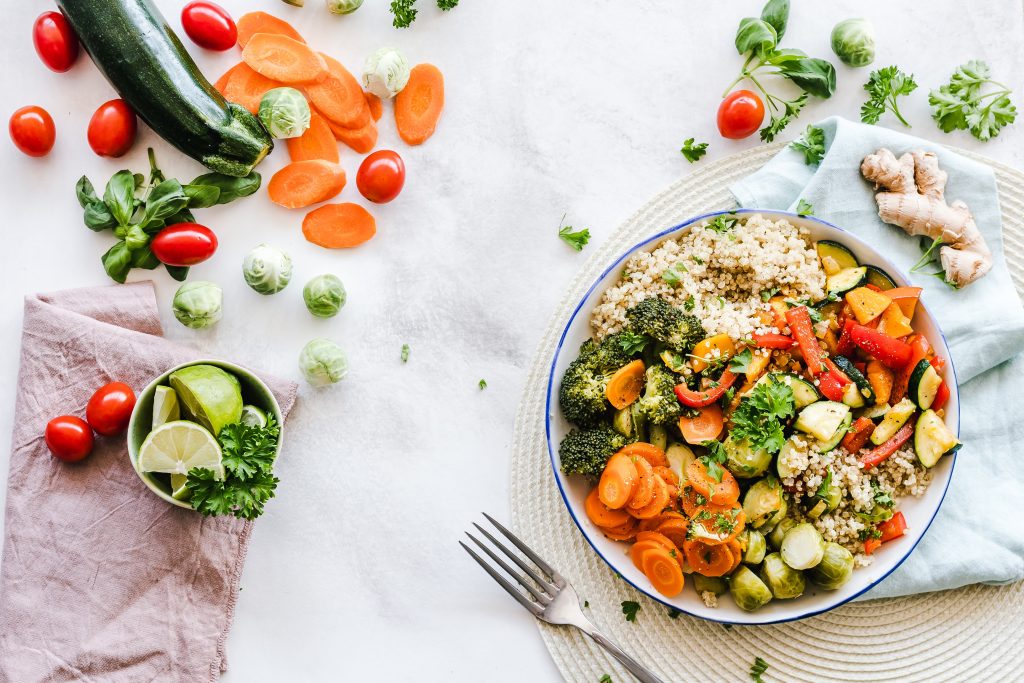National Nutrition Month focuses on the importance of making informed food choices, and this is the perfect time to understand more about what nutrition means to a dietitian. As a Regional Director of Clinical Partnerships for Magnolia Creek, I help clients connect to quality care, and as a Registered Dietitian and Certified Specialist in Sports Dietetics, I am passionate about helping our clients break the chains of the diet culture.
When you look at daily nutrition patterns, consider where you are now and if you need help in making more balanced food choices. Balanced food choices mean you need to consider your food preferences, proximity to food, the time available to eat or shop for food. Balanced nutrition creates neutrality with food, this means we are not in an environment of good and bad but instead wants and needs. Additionally, our nutrition should be flexible, and we should not eliminate food groups unless health conditions require it. Think about what your body wants and needs at that moment.
What is a diet culture?
We live in a diet culture, but we do not really understand what that means. Essentially, diet culture is an idea that we are inherently good for eating in a certain manner or to a certain standard. For example, our society consistently tells us how we should eat and what foods we should eat to be considered healthy. Clean eating may mean that you are good, but if you eat foods that are outside the scope of clean eating you may be considered bad. Unfortunately, for many this way of thinking, creates a morality with a manner of eating and it can become an identity. For example, we often hear people say, “I am vegan” or “I am vegetarian.” This can become an all-encompassing mindset. Restrictive diets do not incorporate food preferences and satisfaction, they are more shame-based. And for many, this way of thinking and eating can be a significant risk factor in the development of an eating disorder.
Balance,Variety, and Moderation
At Magnolia Creek, we believe that all foods can fit into a nutritionally-sound meal plan including balance, variety, and moderation, meaning eating different foods every day versus restricting or limiting variety to a diet plan. You can add variety by incorporating different colors of fruits and vegetables into your meals or choosing something different to eat each day rather than reverting to what feels comfortable or safe. When we say moderation, we mean you need to listen to your body and preferences. By taking food off a pedestal and reducing the “feast or famine” mentality with foods such as cake or French fries, you can create a sense of allowance that results in moderation. When you are not listening to your body and integrating food preferences, you tend to overeat.

In the past few weeks, clients at Magnolia Creek have spent time in an experiential nutrition group being exposed to fear foods or those bad foods, I mentioned earlier. In one group, clients discussed what they felt like makes fear foods so scary. Answers included “They have a lot of sugar” or “They’re really high in calories.” However, when asked about what makes certain foods feel more safe or comfortable for them, instead of making statements only about foods low in calories, fat, or sugar, they said, “It’s something I eat all the time.”
In the group, clients were provided the necessary ingredients to make cake and cupcakes and spent one group mixing up their batter and baking. The follow-up group involved providing a demonstration on how to make American buttercream, as well as how to assemble and use piping bags and tips for decorating. Brittany Braswell, Registered Dietitian at Magnolia Creek, worked with the clients to add color to their frosting and demonstrated how to use piping tips so they could create their own masterpiece. Once completed, each client had their cupcake as part of a snack later in the day.
Often, a fear food becomes less and less scary the more a person is exposed to it in their diet. This is one of the purposes of fear food challenges – increase the frequency of exposure in order to decrease fear of the unknown or unfamiliarity.
What is intuitive eating?
At Magnolia Creek, we start nutrition therapy by rejecting the diet mentality and eliminating the idea of good and bad foods. Using the 10 principles of Intuitive Eating, we utilize internal factors to determine what we decide to eat, how much we decide to eat, and when we decide to eat. Intuitive Eating can help clients to eliminate the “should” and “should nots” of eating and remove the diet culture that tells us when stop eating instead of our bodies providing this message. This is a thoughtful process of what sounds good, how hungry am I, when is the next opportunity to eat. Eliminating the diet culture helps clients find peace with food and incorporate satisfaction with food. Food can be filling but not satisfying which can make us want to eat more even though we are not hungry.




